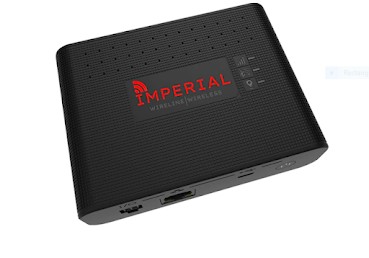Imperial Wireless: A Revolutionary Communication System
Communication systems have been the backbone of human society for centuries. From the earliest forms of communication, such as smoke signals and carrier pigeons, to the modern-day internet and smartphones, technology has constantly evolved to meet our ever-growing needs. One such technology that had a significant impact on communication systems is Imperial Wireless.
The Imperial Wireless was a radio communication system used by the British EmpireEmpire during the early 20th century. It was a revolutionary system that allowed communication over vast distances, enabling the British Empire to maintain its dominance in the world. In this article, we will discuss the history, development, and impact of Imperial Wireless.
History
The origins of Imperial Wireless can be traced back to the late 19th century. At that time, wireless telegraphy was still a new technology, and its potential was not yet fully understood. In 1895, Italian physicist Guglielmo Marconi made a breakthrough in wireless telegraphy by sending signals over a distance of 1.5 miles.
This breakthrough caught the attention of the British Post Office, which was responsible for the telegraph and telephone systems in the country. The Post Office began funding Marconi's research, and in 1899, Marconi set up the Wireless Telegraph and Signal Company Ltd.
In 1901, Marconi successfully transmitted a wireless signal across the Atlantic Ocean, from Poldhu in Cornwall, England to St. John's, Newfoundland in Canada. This achievement proved the potential of wireless telegraphy and sparked the interest of the British government.
The British government recognized the strategic importance of wireless communication and began investing in its development. In 1902, the British government set up the Wireless Telegraphy Committee to investigate the potential of wireless communication for military purposes. The committee recommended the establishment of a wireless telegraphy chain around the world, linking the British Empire's far-flung colonies and territories.
Development
In 1905, the British government established the Imperial Wireless and Cable Conference to coordinate the development of a global wireless telegraphy network. The conference brought together representatives from the British Post Office, the Wireless Telegraph and Signal Company, and the British Admiralty.
The conference recommended the establishment of a network of high-powered wireless stations around the world connected by submarine telegraph cables. The stations would be located in strategic locations, such as Gibraltar, Malta, Aden, Singapore, and Hong Kong. The network would allow the British Empire to communicate with its colonies and territories, as well as its naval and military forces.
The first station of Imperial Wireless was established in 1907 in Clifden, Ireland. The Clifden station was followed by stations in Nova Scotia, Canada, and Sydney, Australia. The stations were equipped with the latest technology, including the newly developed Marconi Magnetic Detector, which allowed for more precise signal detection.
In 1911, the British government established the Marconi Company as a state-owned enterprise responsible for the operation and maintenance of the Imperial Wireless network.
Impact
The Imperial Wireless had a profound impact on the British Empire's ability to communicate and maintain its dominance in the world. The network allowed the British government to communicate with its colonies and territories in real-time, making it easier to govern and administer its vast EmpireEmpire.
Imperial Wireless also played a crucial role in the First World War. The network was used to coordinate military operations and to communicate with British naval and military forces around the world. The Clifden station was used to communicate with the British Expeditionary Force in France, while the stations in Australia and New Zealand were used to communicate with British naval forces in the Pacific.

Comments
Post a Comment